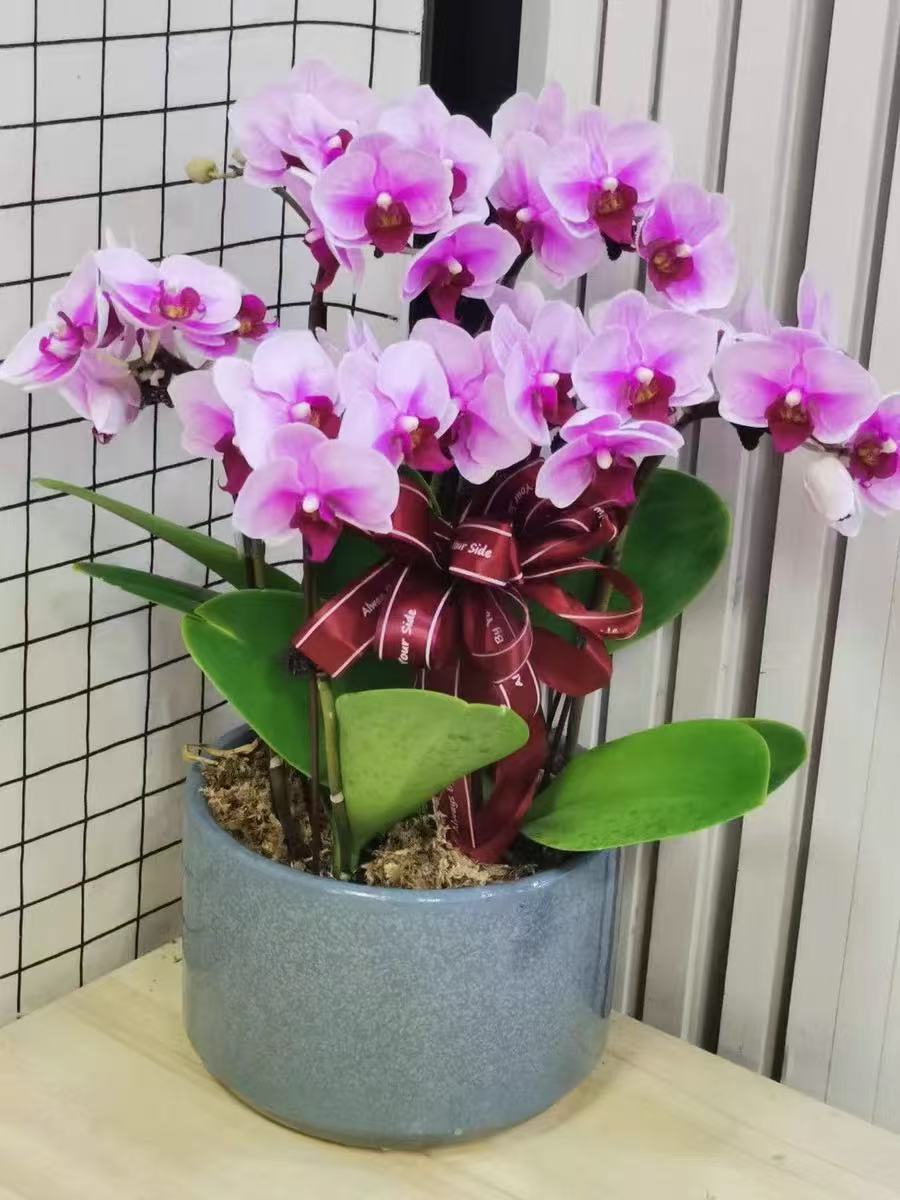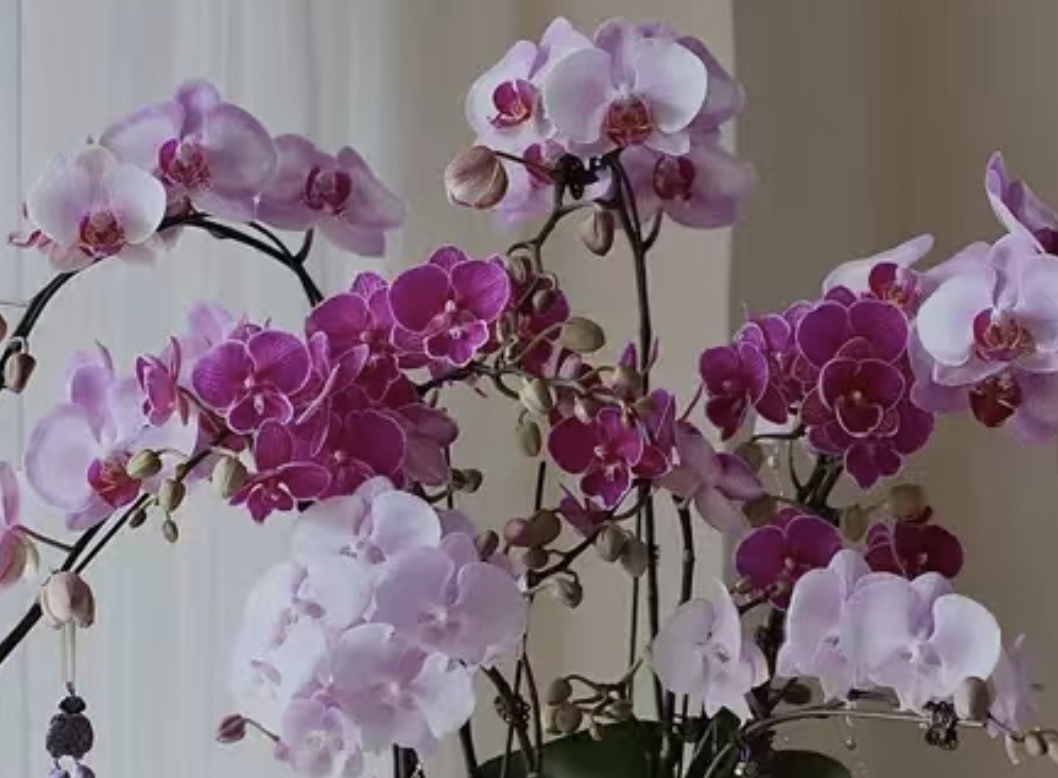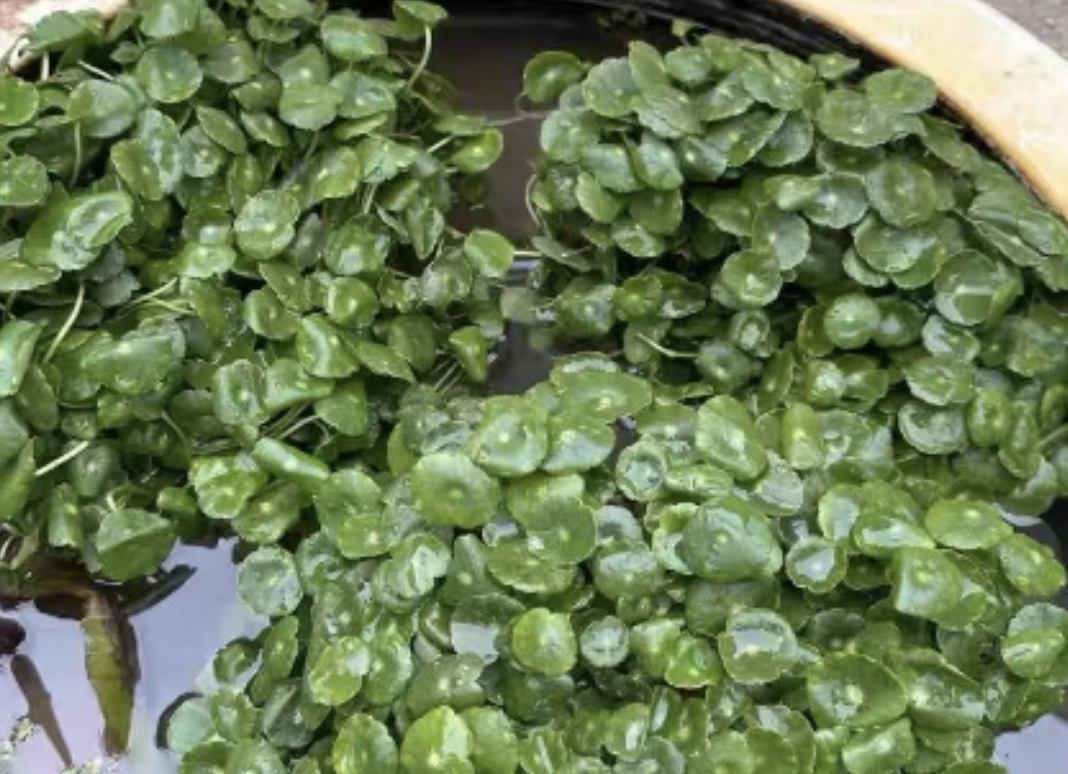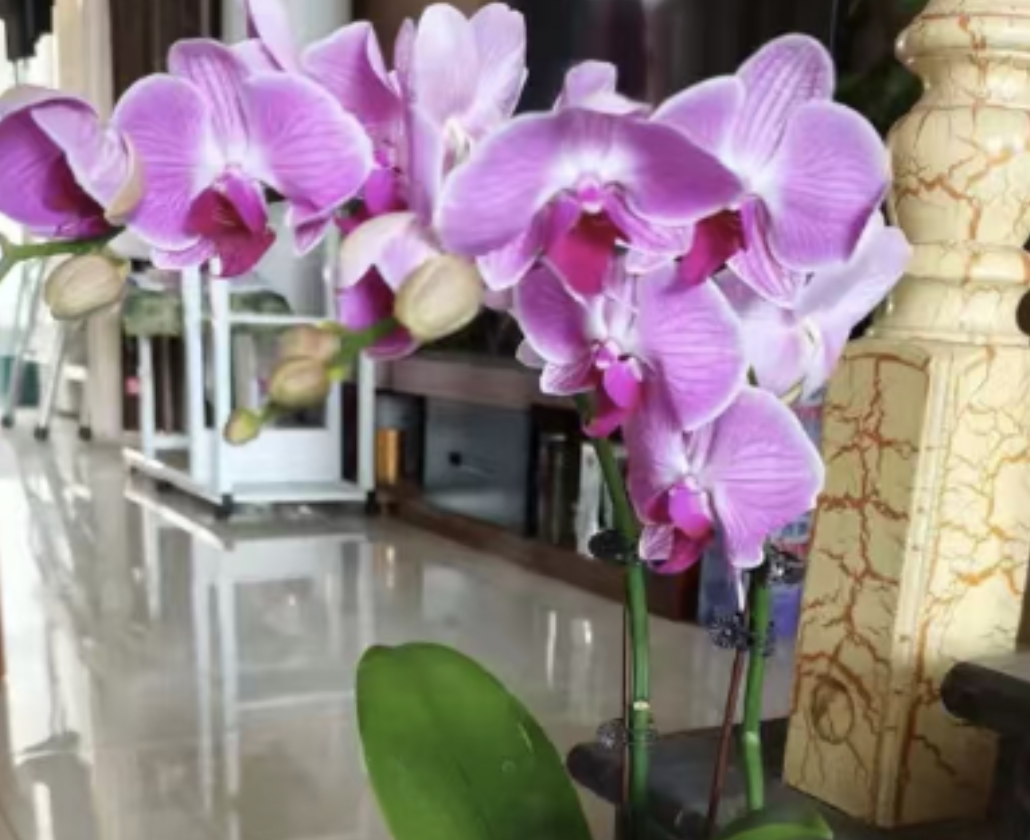Phalaenopsis, as a tropical flower, is favored by many flower enthusiasts due to its elegant posture and gorgeous colors. However, during the cultivation process, the root rot of Phalaenopsis is a common problem, which not only affects the growth of the plant but may even lead to its death in severe cases.
Reasons for the root rot of Phalaenopsis:
Poor air permeability of the cultivation soil and excessive watering: The roots of Phalaenopsis have extremely high requirements for moisture and air permeability. If the soil with poor ventilation and poor drainage is used for planting, once the watering amount is excessive, it is easy to form water accumulation. If the roots are soaked in water for a long time, it will cause the roots to become swollen and rotten. Therefore, choosing well-permeable soil and watering reasonably are the keys to preventing root rot.
Too low temperature: Phalaenopsis originally grows in tropical rainforests and is not cold-resistant. Its optimal growth temperature is between 15℃ and 20℃, and the overwintering temperature in winter should not be lower than 5℃. If the temperature is too low and no heat preservation measures are taken, the roots of Phalaenopsis will not grow well, resulting in root rot.
Pathogen invasion: In the tropical rainforest environment, Phalaenopsis likes the environment of high temperature and high humidity, but such an environment also easily leads to the reproduction of pathogens. Especially after fertilization, fertilizers provide a good growth environment for pathogens. Once attacked by pathogens, the roots of Phalaenopsis are prone to rot.
Improper fertilization: Phalaenopsis has a relatively low demand for fertilizers. Excessive fertilizers will cause the roots to be unable to absorb, resulting in root rot. Therefore, when fertilizing, it is necessary to master the principle of "a small amount many times" to avoid excessive fertilization.
Solutions to the root rot of Phalaenopsis:
Replacing the pot soil and pruning the rotten roots: Once the root rot of Phalaenopsis is found, it should be immediately taken out of the pot and the soil attached to the roots should be gently shaken off. After rinsing the roots clean with clean water, all the rotten parts should be cut off. Note that the intact parts should be retained, as the remaining roots may also revive.
Disinfection treatment: Prepare a new soil suitable for the growth of Phalaenopsis again. The new pot soil should choose materials with loose, breathable, and good drainage properties, such as perlite, vermiculite, and leaf mold, etc. The pot soil can only be used after it is completely disinfected. You can pour boiling water through the pot soil and then let it cool down for later use.
Replanting and maintenance: Replant the treated Phalaenopsis into the new pot soil. Note that the area around its rhizome should be compacted, but do not directly press on its roots to avoid damaging the root system. After planting, move Phalaenopsis to a cool and ventilated place for maintenance, cover it with a layer of plastic film, and keep the temperature at about 20℃. Generally, after waiting for about 20 days, Phalaenopsis can grow new roots.
Controlling watering and improving drainage: In order to avoid the recurrence of root rot, it is necessary to strictly control the watering amount. Follow the principle of "better dry than wet" and water after the soil surface is dry. At the same time, it is necessary to ensure that the pot soil has good drainage performance. You can lay a layer of gravel or ceramic particles at the bottom of the pot to increase the number and depth of drainage holes.
Regular inspection and pest control: Regularly inspect the growth status of Phalaenopsis, and take timely measures to prevent and control it once signs of pests and diseases are found. Biological control methods can be used, such as introducing predatory insects to control the number of pests; chemical control methods can also be used, such as spraying insecticides, fungicides, etc. However, when using chemical control methods, attention should be paid to the dosage and usage methods to avoid harming Phalaenopsis.
Through the above measures, we can effectively solve the problem of root rot of Phalaenopsis and help this beautiful flower regain its vitality.
What are the reasons for the root rot of Phalaenopsis?

Share with
Tagged in :




Leave a Reply